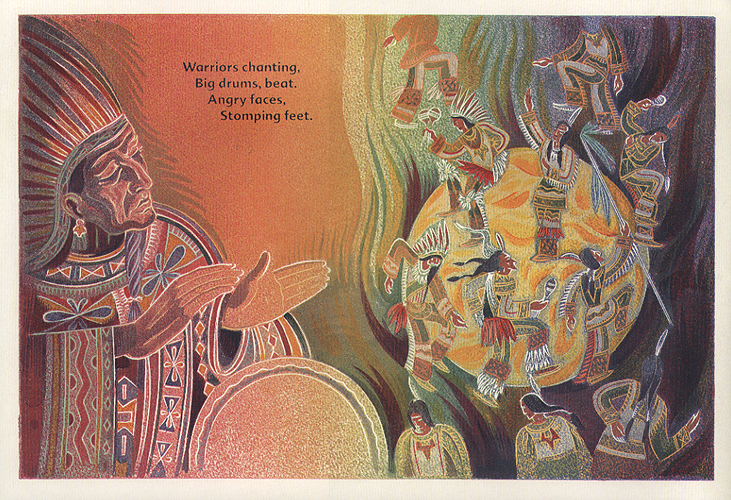Educator Debbie Reese
reports on a children's picture book that got rave reviews from Publisher's Weekly and Kirkus. She notes some of the book's problems:
Along the way, she and Stephen Alcorn (the illustrator) feed the stereotype monster. A man plays a drum with his hands while other men dance in a circle in the stereotypical ways... Every single dancer has one foot off the ground, arms thrown out or skyward. That scene is repeated on a second page later in the book:
Warriors chanting,
Big drums, beat.
Angry faces,
Stomping feet.Reese's conclusion:
Her book would have been so much better if she'd taken the reader into the present day, with a few pages about contemporary Nez Perce children.
Then again, she'd still has that title "Broken Feather." It seems to me she's steeped in the plight narrative and would have to do a lot of work to break out of it.(Excerpted from Debbie Reese's
American Indians in Children's Literature, 3/16/09.)
Comment: Nice art. But how unsubtle is it when a tragic Indian in a tragic tale is called "Broken Feather"? Did Broken Feather's parents know their culture was doomed when they named him?
Here are some other names they may have considered before settling on Broken Feather: Sad Eyes, Wounded Bear, Falling Hawk, Sinking Stone, Fights No More, Wrapped in Blanket, and Gives Up. Sheesh.
For more on the subject, see
The Best Indian Books.



No comments:
Post a Comment